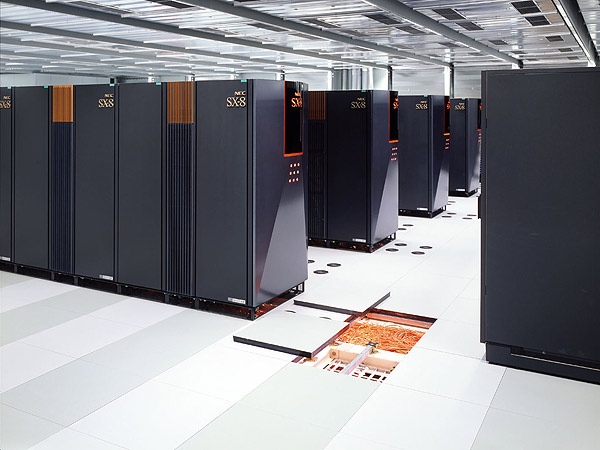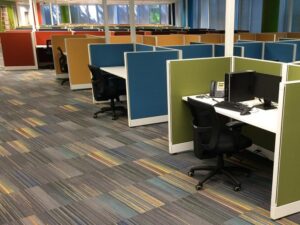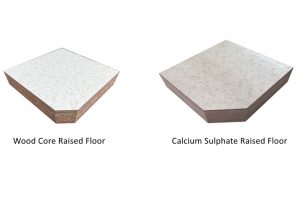Nowadays, raised floors are widely used in data centers, computer rooms, and other places. However, our first thought is steel anti-static raised floors when referring to steel anti-static raised floors. In fact, calcium sulphate raised floor also can be used in data centers, computer rooms, telecommunication rooms, server rooms, and other high-grade rooms. Even more, somewhere can achieve better paving effects. In this topic, I will talk about calcium sulphate raised floors.

When it comes to calcium sulphate, I think most of us will think about the CaSO4 in our chemistry class at school. In fact, our calcium sulphate raised floors are different from the CaSO4. So, what’s the production of our calcium sulphate raised floors?
The production process of encapsulated calcium sulphate raised floor
- Mix natural gypsum, plant fiber, pulp, and other materials in a certain proportion and stir evenly.
- Press the stirred raw materials to form calcium sulfate base material.
- Place the calcium sulphate board in a constant temperature and humidity room for maintenance. The curing cycle is about 15 days.
- Place the cured calcium sulphate board in an oven with an average temperature of 80-100°C and dry it with hot air for about 30h-40h.
- The calcium sulfate board has formed a stable structure after drying, and its size can be processed at this time. Carry out a series of processes such as planning, trimming, sanding, slotting, and drilling.
- Made of upper steel plate.
- Made of lower steel plate.
- Veneer.
- Press fit.

The structure of calcium sulphate raised floor
There are two sizes of encapsulated calcium sulphate raised floors, 500mm*500mm and 600*600mm, whose thickness is 25mm or 30mm. This panel is a sandwich structure, and the middle is calcium sulphate board, top and bottom are galvanizing steel, the steel is riveted at four sides.

The thickness of the calcium sulphate anti-static raised floor can be customized. Standard thicknesses are 28mm-36mm. Galvanizing steel sheet is pasted on the bottom; the top is covered with anti-static coverings that I introduced in the steel cement anti-static flooring part, four sides are protected with PVC edge trims. Of course, we also have ABS edging type. Injection molding is applied to the production of calcium sulphate panels. Different from PVC edges stuck with adhesive, ABS plastic edges are one-time molding inserted into calcium sulphate board, adhesion to calcium sulphate board is higher. Besides, ABS edges do not use adhesive; thickness is much higher than PVC edges, so its stability against temperature can be much higher.

Characteristics
- Good wear resistance. There are veneers on the top of calcium sulphate anti-static raised floor, such as HPL, PVC, and porcelain. The surfaces are all very wear-resistant, so the wear resistance of the calcium sulphate raised floor is also perfect. Therefore, calcium sulphate raised floors can be used in public places such as monitoring rooms, school computer rooms, and office buildings.
- The feet feel good. The calcium sulfate floor has higher elasticity and impact resistance than the steel floor. Those places with high load-bearing requirements can also use the calcium sulfate anti-static floor, and the cost is relatively lower than that of the steel floor.
- Natural and environmentally friendly. The main component of the base material of calcium sulfate anti-static floor is natural gypsum, which does not contain any radioactive elements, formaldehyde, benzene, and other harmful substances. It is a green and environmentally friendly floor decoration material that more and more people choose to use.
- Good fire performance. The raw materials of calcium sulfate anti-static raised floor are not easy to burn, so they have good fire resistance.




